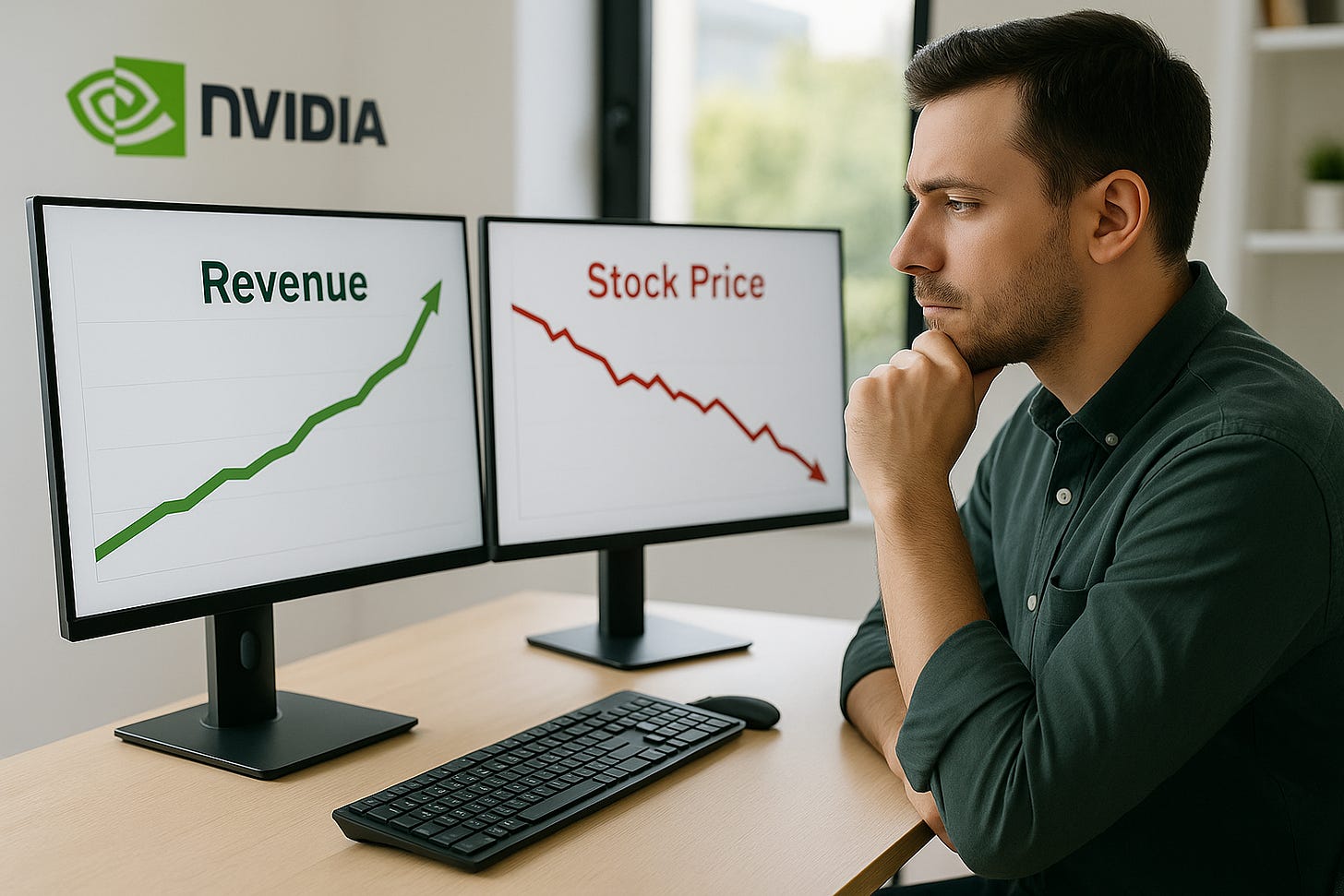Nvidia and the Post-Earnings Setup: When “Great” Isn’t Good Enough
Wall Street called Nvidia’s quarter a letdown—but the numbers tell a different story. This dip could be a golden opportunity for investors.
What’s up friends,
Yesterday, we started organizing the pieces of Nvidia’s puzzle: How did the company deliver one of the strongest earnings reports in corporate history... and still watch its stock fall?
Today, we’re going to piece it all together. Because what happened to Nvidia is a market lesson we should never forget—because this scenario just gave us one of the best investment opportunities of 2025.
Were the Numbers Really That “Disappointing”?
Let’s put the numbers in perspective, starting with revenue:
Revenue hit $46.7 billion—a 56% increase 🚀 compared to last year and 15% higher than just three months ago. Want to put that in context? Essentially, Nvidia just added the entire annual revenue of a Fortune 100 company in just three months. Imagine Netflix or Adobe appearing in your portfolio overnight. That's the scale we're talking about.
Net income? $30 billion! Not only is that double what they earned last year, it also puts Nvidia ahead of Apple, Microsoft, Meta, and Amazon’s net income for the same time period. Nvidia is printing money at a rate most of us have never seen before. And that’s not the best part…
Their data-center sales alone pulled in $41.1 billion. What does that mean? The data-center unit alone is now worth more than Coca-Cola, Nike, and Starbucks as entire companies. And it's still growing.
But wait, there’s more…
Management rolled out a $60 billion buyback program—the twelfth-largest in US history. That tells us management is confident about Nvidia’s future. When a company commits that much cash to buying its own stock, it's essentially saying: "We've looked at every investment opportunity on the planet, and we believe in ourselves more than anything else out there."
Oh, and their guidance for next quarter? $54 billion in projected sales—and that's without counting a single dollar from the restricted H20 chips designed for China. If those trade restrictions ever ease up (and they will), that's billions of unaccounted cash that Nvidia will collect (and share as a surprise in a future earnings report).
The Psychology of Perfection
So why did Wall Street brush all that off?
Well, Nvidia’s earnings have come in so far ahead of analysts’ expectations every three months since 2020 that Wall Street expects them to defy gravity... always. And here's where human psychology gets fascinating. Because this isn’t the first time the market has punished a company for being great instead of perfect.
In 2013, Apple's revenue grew by 33% and its net income drastically increased. But the stock still fell 45% in the following months. Why? iPhone sales—they were strong, but they didn’t beat what investors hoped for. The business was healthy and its numbers were outstanding, but investor sentiment overpowered all that.
Nvidia’s dip followed the same playbook. Data-center revenue hit $41.1 billion, an all-time high. But because analysts whispered expectations of $41.3 billion—a difference of less than half a percent—what should have been "record-breaking" became "disappointing."
That’s how investor psychology works. When a company becomes the face of an entire business trend—in this case, the AI boom—expectations grow so high that extraordinary results can feel underwhelming. The numbers didn’t change the story. Investor sentiment did.
The Three Stories Nobody’s Talking About
While investors obsessed over that tiny “miss,” three much bigger developments flew under the radar:
Keep reading with a 7-day free trial
Subscribe to Earn Out Loud to keep reading this post and get 7 days of free access to the full post archives.


